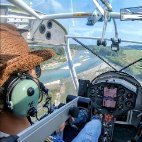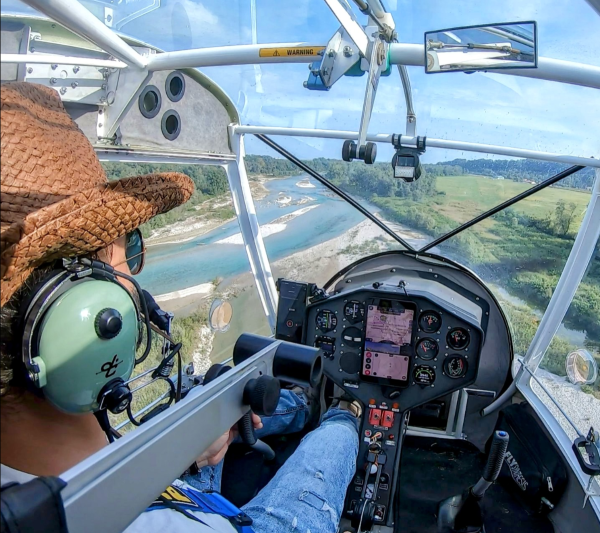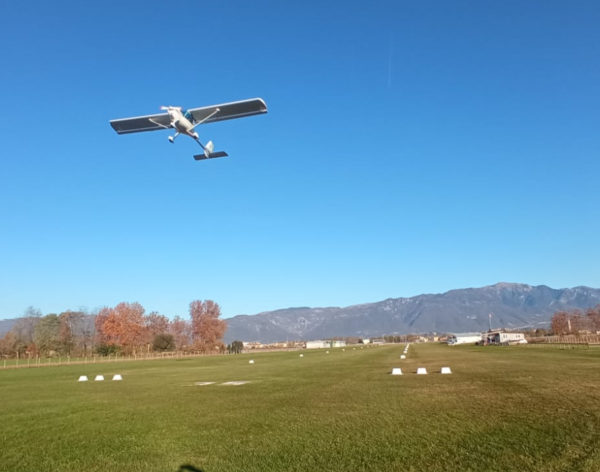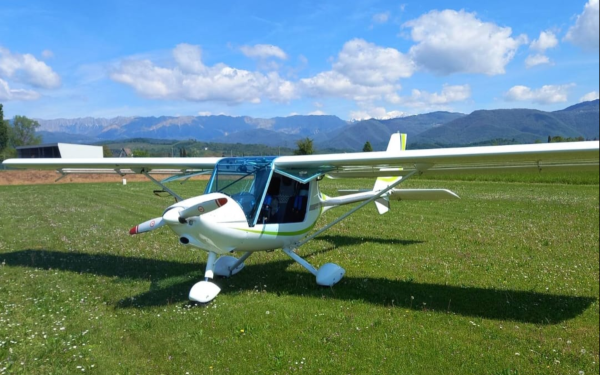-
Posts
11 -
Joined
-
Last visited
About MarcoP
- Birthday 31/10/1979
Information
-
Aircraft
Fly Synthesis STOCH CL
-
Location
Treviso
-
Country
Italy
Recent Profile Visitors
The recent visitors block is disabled and is not being shown to other users.
MarcoP's Achievements

Member (1/3)
-
I'm not capable to follow your discussion anymore: it's too technic for me. I would like to stick with Jab's manual as more as i can, that's my personal point of view on something i barely chew as: "mechanics topic". Yes and No, there is a connection, in my eyes, and it is the following: the airplane factory was used to make a lot of un-authorised customisation to the engine at install time (oil jet and pistons are just a couple as example, we found many more) and God only knows how many more they did which we haven't found yet. This tendency has been confermed by more Fly Synthesis owners and by another (ex) Jabiru authorised mechanic (who was the main one here in the past 10 years). Long story short: do you have a Fly Synthesis plane powered by a Jabiru and you are experiencing strange issues? don't expect the engine is installed in the way it has been written in the manual. Trust nothing, double check everything, even the most basic and unbelivable things.
-
It seems i've found the root of the problem: Fly Synthesis (my plane's airframe brand) used to perform several customization to Jabiru engines when installing it on their planes, such revesing upside-down all the pistons and allowing more oil to flow from the sump to the rockerbox by drilling to enlarge and/or filing a side of the oil intake flow restrictor. Don't ask why they used to do that, i don't want to know, it's pointless as they went bankrupt and shutted down the factory.. Here you are the pictures of what i've found. One more question: wasn't this supposed to be checked during the top-end overhaul?
-
Never had the opportunity to perform an oil change. Overhauled after 20 hours from purchase. Then performed by certified Jab tech at the end of run-in. I presume it's the correct amount. Dipstick has been checked now, it's correct. But JSB013-1 is also saying "if you suffer of this stay with oil on lowe mark of dipstick". I've not done this, always at 75%.
-
sorry, my mistake, it's JSB013-1 not 031 yes, look at picture below, it gives you the clear info it is abnormal (+ there is enough litterature in internet about the oil level in the rockerbox) Ok, I've drilled a hole of 2,5 mm in the polycarbonate cover to simulate JSB013-1. HERE the new video of the test. Results goes in the good direction but it's not 100% satisfying. When not at idle (1200/1400 rpm is enough) all cylinders have oil level at green line, that said let's talk about when the engine is at idle, which is the common line in the problem. with NO holes (before "fake JSB013-1 test") cylinders #1 and #2 oil level is at green line with NO holes (before "fake JSB013-1 test") cylinder #3 sits at yellow line with NO holes (before "fake JSB013-1 test") cylinder #4 sits at red line ---> and spark plugs get fouled by oil travelling on the valve stem. Applying the hole on the cover ("fake JSB013-1 test") then cylinder #4 gets down to yellow line as #3. If i cover the hole with my fingers then the level goes up to red line, if I un-cover the hole the level goes down to yellow again. I have not tested cylinder #3 While hole is open, if i oper the oil tube (refill/inspection) then the oil level gets up to red line again. The thing that #4 gets down to yellow line, which is the same level of #3, is very good, considering that #3 never had "too much" oil in the combustion chamber and never fouled the spark plugs! So.. it's definetly an issue related to the "atmosferic pressure" in the oil circuit, the thing is: will we consider this just a rockerbox depression issue, or do we need to consider a probable oil sump counter-pression issue too? There used to be a jabiru indication to change the oil sump with a bigger one to solve pression issues in the oil sump, but i can't recall if it was about a de-pression in the sump, or a counter-pression in the sump, or a depressionin the rockerbox or (at last) a counter-pression in the rockerbox.. anyone remembers this? Anyway, they no longer sell that sump and i cannot find a used one, so.. 😞 I've received the suggestion to add an air/oil separator, not to bring separated oil in the sump again (absolutely not!), but to help stabilising the atmospheric pressure in the sump instead. Do you think it's needed / useful? In case this is still not enough It could be the step 1 needed to get to the desperate-final-weapon: connecting the clean air output of the oil separator to the carb air intake to help create a more consistent depression in the sump and help oil to flow back from rockerbox. The idea is very similar to car engines, and very similar to what i've read in a post HERE (scroll down to 50% of the webpage to find the oil separator thing. Every chapter is translated to english a little lower than the french chapter)...but it seems a little hardcore to me and i'm worried to get oil in my intake air filter... I'm attaching a pic of the oil separator too, carb should be connected on top instead of the air filter.
-
>> tappet clearances >> but i'm not sure i've measured it in the proper way: starting from the point both valve are "up" and the tappet can "jiggle" a bit by hand... i've found the "looser" point of a valve is when the other one starts going down, more or less half way down. This is the point where i measured it. Given value is the max. I was actively looking for the max, don't know if its how its supposed to be done. The used instrument is pretty cheap and coming from temu online sore for less than 2 €, highly probable it is not accurate. Clearance seems to be too wide, but i am not capable to fix them, or i'm simply worried to try: not having ever seen how to do this properly. Cylinder #4 right valve: 0,38 mm goes through and 0,4 mm doesn't left valve: 0.38 yes, 0.4 no Cylinder #2 right valve: 0.30 yes, 0.33 no left valve: 0.30 yes, 0.33 no Cylinder #1 right valve: 0.35 yes 0.38 no left valve: 0.30 yes 0.33 no Cylinder #3 right valve: 0.35 yes 0.38 no left valve: 0.4 yes 0.43 no >> Oil Temps and pressure in the past months (taking from some gopro videos i've made) >> 31 October (coming home after 25 Hrs check - end of run-in period, first flight with W100 Plus oil again.) > downwind - 1600 rpm - 2,5 bars - 70° C > final - 1000 rpm - 1,5 bars - 70° C 1 December > park - 1200 rpm - 3,5 bars - 50° C > mag_test - 2000 rpm - 3,5 bars - 55° C > Full throttle on brakes test - 2800 rpm - 3 bars - 60° C > idle test - 830 rpm - 2,5 bars - 60° C > takeoff - 2950 rpm - 3 bars - 60° C > level flight - 2700 rpm - 3 bars - 70° C > descending - 2000 rpm - 2,5 bars - 70° C > climb - 3000 rpm - 3 bars - 75° C > final - 1000 rpm - 2 bars - 70° C 7 Dicembre (experiencing the problem during mag test, on ground) > taxi - 1500 rpm - 3 b - 50° > both mag ON - 600 rpm !! - 1,5 b - 50° (CHT 102/110/130/60 EGT 410/450/440/170) > Full throttle on brakes test - 2550 rpm - 3,5 b - 60° > mag_test oat 2000 rpm --> 400 rpm drop ! - 3,5 b - 60° 7 Dicembre (after spark plug replacement) > park - 850 rpm - 3 b - 50° > taxi - 1450 rpm - 3,2 b - 50° > mag test - 2000 rpm - 3,5 b - 50° > Full throttle on brakes test - 2850 rpm - 2,9 b - 50° > 2° mag_test - 2000 rpm - 3,5 b - 55° > takeoff - 2900 rpm - 3 b - 60° > level flight - 2700 rpm - 3 bar - 70° > base - 1300 rpm - 2,5 b - 70° > final - 1000 rpm - 1,5 b - 70° 21 december (today i experienced the full #4 shutdown during flight time) > waiting for takeoff - 1200 rpm - 2,5 b - 60° > takeoff - 2900 rpm - 3 b - 60° > level filght - 2700 rpm - 3 b - 70° > level filght - 2500 rpm - 3,5 b - 70° > descending from 6000 ft - 2500 rpm - 3,5 b - 70° (15 minutes before fail) > descending from 6000 ft - 2500 rpm - 3,5 b - 60° (10 minutes before fail) > sadly i've shutted down the camera before flying at idle and experiencing the problem.. but i can tell i flew the last 10 minutes at idle and then the engine started to be rough and CHT and EGT of #4 went down fast as hell. 10 January (flying to the mechanic once more, with brand new iridium plugs, all good.) > level flight - 2600 - 3 b - 70° .
-
THANK YOU ALL! It's nice to see i'm finally not alone looking at this. yes, that's the JSB031-1 i've linked in my original post, but that bulletin is not for solid lifters engine, it's for hydraulic lifters one... still i am looking at this bulletin as an indication of a probable counter-pression issue which needs to be addressed as the bullettin says or in a similar way. As example: there was an indication of changing the oil sump with a bigger one due to pressure issues. This indication was for hydraulic lifters engines too, but once more looking at the same direction of counter-pressure in sump or depression in rockerbox. yes, i used the correct ones as by manual (D9EA), then tried to switch to iridium in the same range: DR9EIX to fly to the mechanic. As the result of that flight was good, i tried to keep using them for some more hours, but same result. that's going to be my next test, next saturday, I'll drill a hole of the same size of the JSB031-1 on the polycarbonate cover and try to see if the oil drains back when at idle. I suspect it gets worse rather than better. Another try i want to do is to run idle (with polycarbonate cover) and opening the oil refill tube and see if the pressure in the sump gets better and the oil in rockerbox flows back in the sump. Exactly, but it happens only on cylinder #4 and #3 and only at idle. mine too, 100% of its life on MoGas (E5) 95 or 100 octanes. 100% agree, indeed the real problem is: what's causing the oil to not go back, only at idle and only on #3 and #4 (#4 more than #3) oil is always maintened at 75% (3/4) between the min and max. the first 25 Hrs after overhaul i was running on aeroshell W100 and oil consumption has been 300 ml (100 of them into catch bottle). Now i'm running Aeroshell W100 Plus after the run-in period and in about 15 hours i have added 250 milliliters of oil, 50 of them have gone in the catchbottle. level is extremely high at idle (only) in #4 and very high in #3. Only #4 is getting spark plugs fouled. No blue smoke at all. can you address me where to find the contect? ------ A friend of mine, nautical mechanic, gave me 3 "Occam's razor" ideas to think about, tell me what you think about: are you sure the oil stick is the correct one? maybe it's a stupid thing, but if the previous owner replaced it, it may be not perfect and your oil level may result in being wrong. why everything was good during the run-in period with aeroshell w100 (not "plus")? it could be an idea to swap the heads and observe if the problem "follows" the head or not. Here you are the video (if not working retry in 30 minutes, it's uploading right now) of the same test on the other side of the engine: rockerbox of cyl #3 is getting full of oil when at idle too.. but if you compare to #4 the level is slightly lower. (please note that my polycarbonate cover have a bigger cavity than stock iron covers.. so the amount of volume available is wider, the same amount of oil you see in theese 2 videos is problbly filling the whole rockerbox when on stock covers.) at the end of the video i do a mag test and here you can see the problem: a 200+ rpm drop and CHT of #4 going down when i keep the engine running with 1 mag only for some more seconds.. This is not the "full" failure (1 spark still working) like the one i've experienced in flight, but it's what i usually get after a long idle landing (mid downwind to touchdown) or after "gliding" 10 minutes. Thank you all!
-

Hi All, flying a Fly Synthesis Storch CL, Jabiru 2200 powered.
MarcoP replied to MarcoP's topic in Just Landed - Welcome
here it is my problem: -
Hi all, here I am with my 2nd post (introducing myself here) looking for opinions on the problem is driving me crazy since 1 year now. (it's a long post, to have a short version jump down to the blue part and read that one only) I'm new to ultralight piloting and not a mechanic at all, but i like to read and learn about things i am passionate so i'm quickly learning while getting fouled by doubts and questions too. FOULED.. that's the word! 1 year ago I purchased a Fly Synthesis Storch CL powered by a 1st gen Jabiru 2200. In a matter of 20 Hs I experienced a very hard RPM drop during mag test: 1 cylynder was off with 1 mag off. I checked the spark plugs and some were oil fouled. So i took my baby to the doctor (certified Jabiru service) who had a deep look at it and gave me the bad news: no service bulleting has ever been done here, pistons are not Jabiru's ones, valves and guides needs replacement, there's a oil recovery system which goes directly in the sump (with no even oil/air separator), etc.. etc.. long story short: let's do a top-end overhaul even if it's a little early (800 Hrs on the engine) and apply all (well, not all, but most of) the bullettins . So we did: 2 months (and a LOT of money) later i got my baby back and happily flown 25 hours down to the 1st periodical check after the overhaul (and run-in oil replacement, all done by certified Jabiru mechanic). After the run-in period (less than 5 hours later) I experienced the fault at mag test again. It recalled in my mind i was doing some "gliding" at the nearby mountains just 15 before landing (storch has a good glide ratio and i'm an ex glider pilot so..) and to do that i was keeping my engine at idel for a while. Now that i was thinking about it: i did just the same when it happened the first time: several minutes idling to practice emergency approaches. I talked with my mechanic, cleaned spark plugs, tested again and all went good for more or less 5 Hrs, then AGAIN: 1 mag dropped more than 200RPM: applying 10 seconds of full throttle while on full brakes did the trick to clean the sparkle plugs this time, so i wanted to try by changing all the spark plugs with new ones and give it some more testing, 3 Hrs later it happened again, this time it happened while flying (after a couple of minutes idling) and cylinder 4 completely shutted off (CHT and EGT falling down as fast as hell while engine performing rough. Likely my plane is capable to fly safely home with 3 cylinders only.. so it got me home. After another long talk with the mechanic we decided to put new spark plugs (iridium this time) just to get there and investigate it deeper. So we did. The whole fly has been ok, 2700 RPM (which gets me quite close to my max allowed speed: 160 km/h on 180 VNE) and the doctor outcome has been: - there is oil in the combustion chamber of cyl #4, indeed.. we'll replace the rings once more. - there is a coil which is not working perfectly, we'll replace the coil (i insisted to replace both of them + all cables + all spark plugs again). ... so we did, another good amount of money later i was happily flying home (2 hours fly). Just 1 flight later (1 more hour) after getting it home I had to perform a quite long idle approach to land (this plane is almost a glider, it never gets down, flaperons are not that much effective as breaks.. he really wants to fly!) and guess what? Fouled plugs (iridium) on cyl #4 again. So let's recap: freshly overhauled (cyls have been rectified, new pistons, new valves (double springs), new guides, rectified valve seats @ the heads, etc..) changed plugs several times changed coils and cables changed rings twice I came across several readings and my attention went to the higher side of the engine (as cyl/piston/rings are fresh!) I've been attracted by a video about the amount of oil in the rocker chamber and the whole discussion about the internal pressure issues (but those were about Gen 2 engines).. I know you know what I'm talking about, many of those readings where in this forum, this one as example. Some more interesting readings i've found: THIS is quite an interesting article, but looks a little hardcore to me, involving guides, oil cooler, complete oil re-routing and using carb intake to get some depression in the oil sump. It is in both French and English language a little under the French. Even if JSB013-1 is for 2nd gen engines only (mine is 1st) I was wondering if the same concept may apply somehow. This, This, and This too are 3 pages from the same guy who had the opposite problem but ended up investigating the same region of the engine trying to fix oil feed up there. So I decided to run the "trasparent test" myself and I found that the rocker chamber gets full of oil when at idle ! Here you are the video, interesting things happening at 2:10 What's your opinion on that? Could PCV be a valuable try? What about an "expasion" oil sump (i am on the "small sump" of gen 1) Have you ever experienced this? @FACTHUNTER i'm looking at you with great hope! From what i understood, reading at you, it looks like to me that you are the one sticking to the "hard but safe path" like a jedi, instead of going for quick and furious patching of the problem, creating another one in the near future.
-
MarcoP changed their profile photo
-
Hello everybody, I've spent hours reading a lot in this forum, mainly about Jabiru engines, as I am experiencing some troubles (i'll write a dedicated post asking for opinions). I'm glad i've found an active forum with passionate people who knows my engine 🙂 I'm writing from north-east Italy, I'm 45 years old, very new to mechanics (i'm a computer guy) but i like to read and learn as much as i can. I Used to be a glider pilot 27 years ago, then i've spent 20 years in skydiving amd wingsuiting, now i just got my ultralight pilot ratings and got myself my Storch powered by a 1st Gen (solid lifters) Jabi 2200. The Engine is driving me crazy, i've spent an huge amount of money to investigate a spark plugs fouling problem (gone through a top-end overhaul too) with no real result and after reading everything on the internet (saying whatever and the opposite of whatever), i decided to signup to the forum, which was something in my schedule anyway, and ask directly. Here you are a couple of pics of my baby just to introduce myself.











